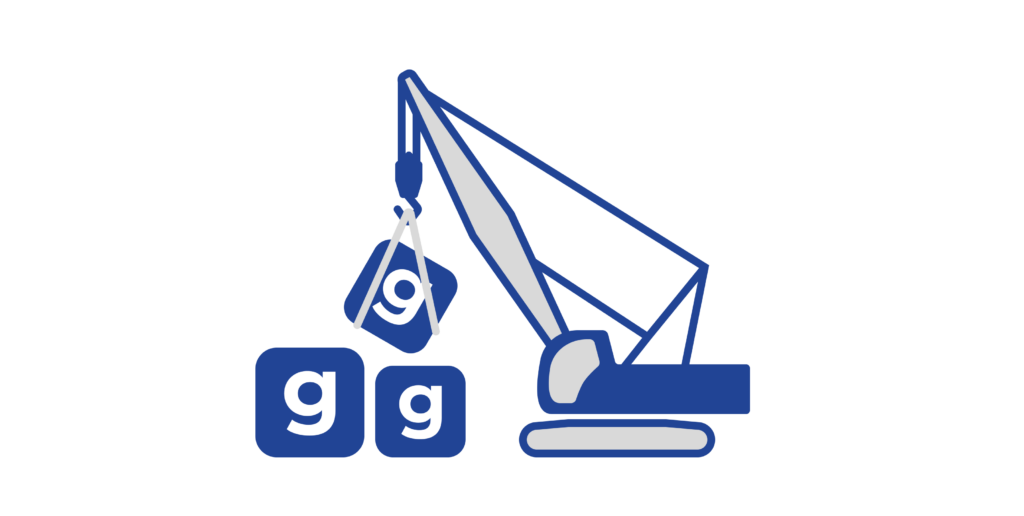
Get Started
Graphite's supplier management tool helps you onboard faster, cut time on risk reviews and streamline supplier validations. Save time and money.
July 6 2023
4 Tips for a More Effective Contract Negotiation in the Procurement Process
Much of the procurement negotiation advice out there focuses on at-the-table tactics ranging from your body language during a negotiation to what you should say to gain the upper hand. These tactics may even stretch as far as dictating where you should place things on your desk to create the appearance of success and confidence. While such advice may have its place, what you do before you initiate contract negotiation in the procurement process is what really matters.
You’ll find a far greater impact from putting in the time to prepare for a successful negotiation properly rather than rearranging your desk or controlling your mannerisms. The most influential factors to any negotiated agreement are in motion before a meeting ever takes place.
Omid Ghamami, CPSCM™, noted procurement author/speaker/consultant and CEO of the Procurement and Supply Chain Management (PSCM) Institute, has helped us put together tips for effective procurement contract negotiations that will help to make an impact and deliver the preferred outcome.
1. Successful Procurement Contract Negotiations Don’t Always Start From Scratch

Unless you’re working for a new company, you’ll rarely find yourself negotiating a contract that is completely dissimilar from anything ever done for your business. Typically, your business has bought from similar suppliers, and in this case, history is your friend.
The idea here is not to copy what’s been done in the past. Rather, having historical contracts to work from gives you the perfect jumping-off point to ask questions. Ask: What’s been working well here? What hasn’t? What kind of problems have arisen from this supplier relationship? How are you currently measuring success?
Once you’ve analyzed these questions, you can determine where to go next and what needs to be fixed. When you go through past deals and ask these questions, you can tease out the information you need to focus on remedies and performance results.
One pitfall to avoid while being entrenched in contract negotiation in the procurement process is projecting ahead to problems you think you might face. If you’ve never faced a problem, all you can do is guess. It’s better to stay grounded in experience and fact.
2. Base your Procurement Negotiations on What’s Valuable to the Supplier

Remember to base your influence on what is valuable to the supplier rather than what is valuable to your business. If you enter intending to push your policies, procedures, a bid time frame, etc., any productive collaboration with the supplier will go swiftly out the window.
Do Your Research
An important principle of procurement contract negotiation is to do your research. Think of yourself as an investigator. What can you dig into about your supplier? What is important to them? What do they avoid?
Do your due diligence in researching everything you can about your supplier’s business. Read their annual reports and dive into the details. Try to learn which of their products or areas of business are doing really well and which are struggling.
If you can figure out what’s keeping your supplier awake at night, you can come back with a proposal that helps them solve the problems you’ve discovered that they’re facing. Often they’ll be pleased to provide a much larger discount in return. Instead of thinking about how your business can get what you need, come in with value creation in mind. How can you benefit each other?
After that comes the negotiations. Think of the negotiations as transferring value between the two parties. The idea is not how much of the pie you can get but how many more pies you can bake together.
One caveat: often, you can go to your supplier, and they will be open to questions regarding your desired outcome. However, if you go to your supplier with a list of investigative questions, their walls may go up. Often, to come prepared with enough details to truly be valuable, you’ll likely have to do that research on your own.
Shift from Procurement Negotiation to Supply Chain Collaboration
It can’t be stressed enough–the biggest savings don’t happen because of at-the-table price squabbling. Any savings at the table are simply an exercise in supplier profit compression or saying, “Give me a better price.” But all that will do is give suppliers a bad taste.
It’s important to cut costs surgically, but that should be figured out before you sit at the table. Sit down and cut everything you can until there’s nothing left to cut. Generally, around 18% of money sitting in product and service design doesn’t need to be there to meet the key performance indicators identified by the end user.
Then, with those reductions identified, it can become a question of collaboration with your supplier instead of a cutthroat procurement negotiation. You’ll find you have a more eager supplier when you can shift from negotiation to collaboration.
Don’t Be Married to Custom
It can be easy to fall into the trap of becoming too custom. Instead, think: how can we make this as simple as possible?
When a supplier has to put together a lot of custom considerations, they can charge more, but it’s still very likely not their preference. The supplier has been in their industry the longest. They’ve come across issues and learned to solve them. If you come in and decide you know better (which you likely don’t), that can cause issues.
Go in expecting that the standard will fit your needs and only vary where you absolutely have to. You’ll find this saves you a lot of time, money, and headaches.
Find Your Bargaining Power
When you have researched and learned about your supplier’s business, you can drill in and find areas where you can increase your negotiating power. For example, say a supplier has on- and off-seasons, and they make more money during their on-seasons and spend more money during their off-seasons. If you have flexibility, you can offer to pay them during their off-season. It’s a great bargaining point for you and a great opportunity for them.
If the offer was enticing enough, you could ask for sway in other high points on your priority list. By investigating that supplier’s needs, you might get considerations you’d never have achieved.
In negotiations, it’s a big fallacy to assume that money is the only important thing to the other party. You never want to enter a negotiation assuming that’s the case. There are always other considerations that weigh into the value of a contract for both parties.
3. Watch for Commercial Considerations During Negotiations in the Procurement Process

Issues in manufacturing can begin in contract law negotiations. Too often, procurement teams spend most of their time putting out fires when well-written contracts could easily prevent them.
Think of every issue you face as a symptom of a root cause – something you can correct before it even begins. If your team puts out easily avoidable fires too often, it’s time to review your contract terms.
It’s Not All About Costs
In the United States, we love to talk about money. We love to negotiate using money. We order things based on cost more than any other part of the world. That’s not to say that cost isn’t important, but when it’s your biggest bargaining consideration, it isn’t wise to begin with cost.
Instead of settling the question of a fair price as the first item on your agenda, discuss other items first; discuss the cost only when you’re satisfied with every other aspect of the agreement. If you begin with cost, the supplier knows they have your business and will be less motivated to meet your other concerns. If you iron out the full scope of what you’re looking for until you’re satisfied before even touching on the question of price, it becomes a more collaborative discussion.
If you begin with price, the procurement department likely adds very little value to the contract other than saving money. Remember, time can be just as valuable as money. Save yourself time by solving price issues later on and prioritizing your other concerns in the procurement contract negotiations.
Don’t Leave Procurement Contract Negotiations to the Legal Team
Too often, procurement professionals allow legal approval to be their measure of a good contract. Legal is an important department to include in the discussion, there’s no question, but a lawyer’s job is to take care of those legally binding concerns. It’s not Legal’s job to ensure the procurement contract includes the terms that only procurement will know are necessary.
Lawyers will approve if the legal risks are properly mitigated. That includes indemnification limitation, liabilities, intellectual property, insurance damages, etc. Nowhere on that list are performance results or price. Only your procurement team, dealing with issues from past negotiations, can properly vet performance issues. Just because a contract is safe doesn’t mean it’s the absolute best for the business. Procurement can add real value by taking a closer look and including commercial considerations.
4. Your Negotiation Process in Procurement Should Revolve around Results-Based Clauses

Include Performance Outcomes
One of the most important things you can include in procurement contract negotiation is performance results. Instead of measuring activities, think about measuring outcomes. Make sure the metrics you use are results-oriented success metrics. Don’t waste your energy asking for the wrong things.
Many agreements are written to be inviting and enticing, and they stick to legal considerations. Yet, often they miss the bigger picture and allow for a cascade of small issues to develop. Chances are, procurement is probably spending far too much time sorting out issues that arrive in “action-required” emails that never should have existed.
It’s easy to zero in on acquiring goods and services and forget about performance results, but you’ll do so at your own cost. Think of a haircut, for example. If you go into your hairdresser and ask for your hair cut shorter on the sides, you’ll certainly get a haircut, but you may not get the one you wanted. Performance results are variable. Of course, drawing up an agreement for your barber doesn’t make sense, but imagine you did. You outlined exactly what you wanted beforehand. It may seem like a hassle, but you’d be guaranteed the desired haircut. You’d save yourself the trip to another barber trying to fix a poor result.
The difference is between what you want to buy and what you want to achieve. Always craft your contracts around what you want to achieve. More likely than not, your current contract templates are all based on an agreement for goods and services. There’s probably no trace of a performance provision.
But it’s on you to bridge that gap with your suppliers between what they provide (the actual goods and services) and your end goal (the performance result). Don’t make the mistake of thinking this through after the supplier already has your money. If you go to them with issues in the result, you’ll quickly find that they aren’t obligated to change a thing because, by all accounts, they’ve upheld their side of the contract. These provisions have to be part of the negotiation process that takes place before.
Here’s a great principle when watching for these commercial considerations: never get burned by the same issue twice. As soon as you see an issue arise, create a custom contract clause, and at the next cycle, write the solution into your contract with that supplier and all your other suppliers. And while you’re at it, include that clause in your contracts with all future suppliers. You’ll be amazed at the time you find in your schedule as you aggregate these custom clauses.
Include Negotiation Definitions
There are too many words and phrases in the English language that don’t have a perfect or scientific meaning. Say you’re hiring a lawn mower, and tell them you want your lawn mowed smoothly. Well, “smoothly” could mean many different things. Maybe based on other lawn mowing jobs they’ve done, the company does mow your lawn “smoothly,” but to your eyes, looking over at your neighbor’s ruler-straight lawn, it doesn’t seem smooth at all. You should have defined exactly what you meant.
What’s the definition of good? Is it on-time delivery? What is the definition of customer satisfaction? Best efforts? There are a million performance terms that have no concrete definition on their own. That is something you’ll need to break down in the contract.
Incorporate Predefined Remedies During Negotiations in the Procurement Process
Say you lay out everything perfectly in your contract. The supplier has outlined exactly what you are looking for with performance results and clear definitions, yet they still fall short. You may not have the time or resources to find another supplier in the moment of need. Instead, you better hope you’ve included predefined remedies.
A predefined remedy is something you’ve outlined in your contract that needs to happen to make up the difference when outcomes aren’t achieved. If you don’t include these, you may just find yourself out of luck. Outline exactly what will happen when certain requirements aren’t met and how the supplier can make up that difference.
Tie Pay Terms to Performance
The final step is to tie your payment schedule to performance. Too often, a payment schedule centers around activity milestones rather than performance results. However, those milestones don’t always guarantee you’ll see the needed outcomes. So, keep your bargaining chip in your hand until you see the desired results.
Only hand over payment when performance outcomes have been achieved (outlined and defined as explained above). Ensure your contract says that your payment schedule and terms will be tied to those outcomes.
Key Procurement Contract Negotiation Takeaways
We’ve covered a lot in this guide, so let’s break it down simply. The most important part of procurement negotiation isn’t anything you’ve read in a negotiation book. Successful negotiation has nothing to do with at-the-table tactics but rather with negotiation preparation and knowledge of both parties’ needs.
When you come to the table prepared, you’ll find greater success in creating contracts that benefit everyone, and you’ll also see greater success down the line when the contract has been put into practice.
No one can bring the same insight that your procurement team can into performance outcomes, remedies, and what that needs to look like for a contract to be successful. It’s your job to do your research, look at what’s been done in the past, and come ready to craft a contract that will drive success for your business far into the future.
What Next?
If you’re looking for a solution to help you centralize and manage your supplier contracts, keep tabs on when they’re renewing, and the steps that need to be taken, then look no further.
Graphite Connect allows procurement teams to simplify contract organization and send your team alerts when contracts are coming up for renewal. Graphite can also help you streamline supplier management, quickly onboard new suppliers, and even keep track of key success metrics.
Let’s Get Started.
Explore how Graphite Connect can help you easily collect and manage supplier information throughout the entire supplier lifecycle, including centralizing your supplier contracts in a single, secure location.
See for Yourself